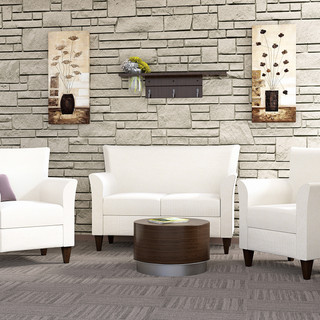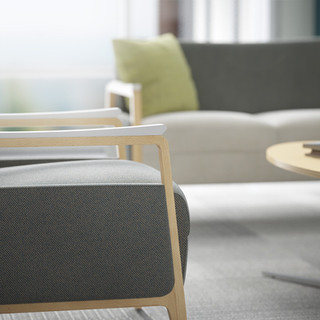How To Design For Behavior Health Environments.
- Jeff Blue

- May 18, 2023
- 2 min read

When it comes to healthcare facilities, layout and design plays a critical role in patient care and healing. Healthcare facilities are shifting from the institutionalized design and are placing more emphasis on patient comfort and creating spaces that feel more like home. In the past, the focus on safety has limited the appearance of these spaces. However current research confirms that the design and layout of these spaces have an impact on the patient and therefore they should be designed to appear comfortable, inviting, attractive and as residential as possible. To learn more about those factors, click here.
In today’s discussion, we will share our experience with behavior health environments and what should be considered when designing a patient-centric space.
WHAT IS BEHAVIOR HEALTH FURNITURE?
To start, it is important to understand what behavior health furniture is and how it is different from standard commercial furniture.
Behavioral health furniture is furniture carefully crafted with the patient and their safety in mind. This furniture is specific to the healthcare environment where the behavior of the patient can not only affect the furniture, but the actual furniture can impact the safety and well-being of the patient. For example, furniture with sharp corners and edges are often avoided.

WHAT SHOULD BE CONSIDERED WHEN DESIGNING FOR BEHAVIOR HEALTH ENVIRONMENTS
Aside from meeting a wide variety of requirements and regulations, furniture should be aesthetically pleasing without sacrificing the safety and durability of the product. This can be a challenge aesthetically. And like all healthcare designed products, cleanliness and sanitation is also a top priority.
It is also important to understand that different spaces within a healthcare facility will require different safety measures. The level of concern for how the design of the built environment affects the safety of the patients and the staff is not the same in all parts of the facility. Below is a list of general factors to consider.
Aesthetics
Residential and hospitality-inspired design
Warm, inviting color palette
Comfortable and welcoming
Safety
Anti-ligature features
Weighted to deter misuse
No sharp points or edges
Floor or wall mount options
Tamper resistant hardware and glides
Desk chairs should be light weight or ballasted
Avoid products with drawers if possible
Open front pieces should have fixed shelves and no doors with sloped tops
Lockable storage units and lockable drawers
Durability
Look for products with internal steel construction methods
Durable, flame retardant, healthcare grade upholstery
HPL, 3D laminate, Solid Surface and/or polyurethane surfaces where possible
Impact-resistant glass products, including tempered and heat-strength
Wall saver capabilities
Cleanability
Easily cleanable with clean out capabilities
Easy to reupholster
No crevices
Easy to clean under and around
Have a few favorite products? We would love to hear about them. Leave a comment with your favorite product in the comments below.






















Comments